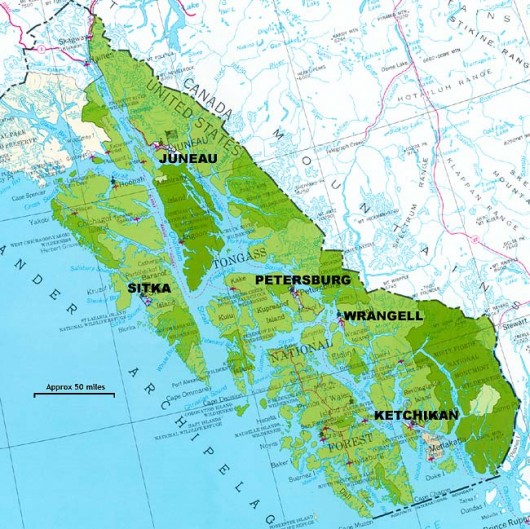The U.S. Forest Service on Friday announced a final decision on amending the Tongass Land Management Plan to transition toward second-growth harvest within 16 years.
The Record of Decision comes about five months after the draft decision was announced this summer.
Tongass Forest Supervisor Earl Stewart stuck with Alternative 5, with some modifications. Those include a few corrections, definitions and clarifications.
The main points in that choice, though, remain the same. The biggest point is that during the 16-year transition, the U.S. Forest Service will offer an average of 46 million board feet of timber on the Tongass National Forest per year.
For the first decade, that will include more old-growth logging than second growth – almost three times as much. But then from years 11-15, the ratio will flip, allowing more young growth harvest and limiting old growth.
By year 16, timber stands offered for logging will be about 90-percent young growth, with a few micro-sales of old growth for specialty products.
The main objection from some environmental groups is that the transition isn’t happening fast enough – they want to move away from old-growth logging within the next five years. Logging industry representatives, though, say the switch is too fast. They think the full transition should be closer to 30 years.
In a Friday teleconference announcing his decision, Stewart said objections were noted  and considered, and the Forest Service chose to stick with a plan endorsed by the Tongass Advisory Committee, a group made up of representatives from conservation, logging and Alaska Native organizations.
and considered, and the Forest Service chose to stick with a plan endorsed by the Tongass Advisory Committee, a group made up of representatives from conservation, logging and Alaska Native organizations.
He acknowledged that there will be a change of administration when President-elect Donald Trump assumes office. But, he notes that the Forest Service’s mission remains the same. Stewart read from a prepared statement:
“While the U.S. Department of Agriculture has a transition team in place to work with the new administration, our employees will continue on our mission of sustaining the health, diversity and productivity of the national forest and grassland to meet the needs of present and future generations,” he read. “Beyond that, I’m not able to or going to speculate further.”
There had been calls to delay the final decision until after the new administration assumes office and provides some direction.
However, Stewart says the Forest Service doesn’t base decisions on what might happen legislatively.
“And so, the team was working very deliberatively to work through the process they had in front of them,” he said. “Concurrently, anything that was directed by federal law, we would have followed completely.”
The amendment to allow a transition to young-growth has been in the works since spring of 2014. It takes effect in 30 days.
Here is a link to a Forest Service webpage dedicated to the amendment process. The link includes a copy of today’s final Record of Decision, along with earlier documents.
This report has been edited to make a clarification.







